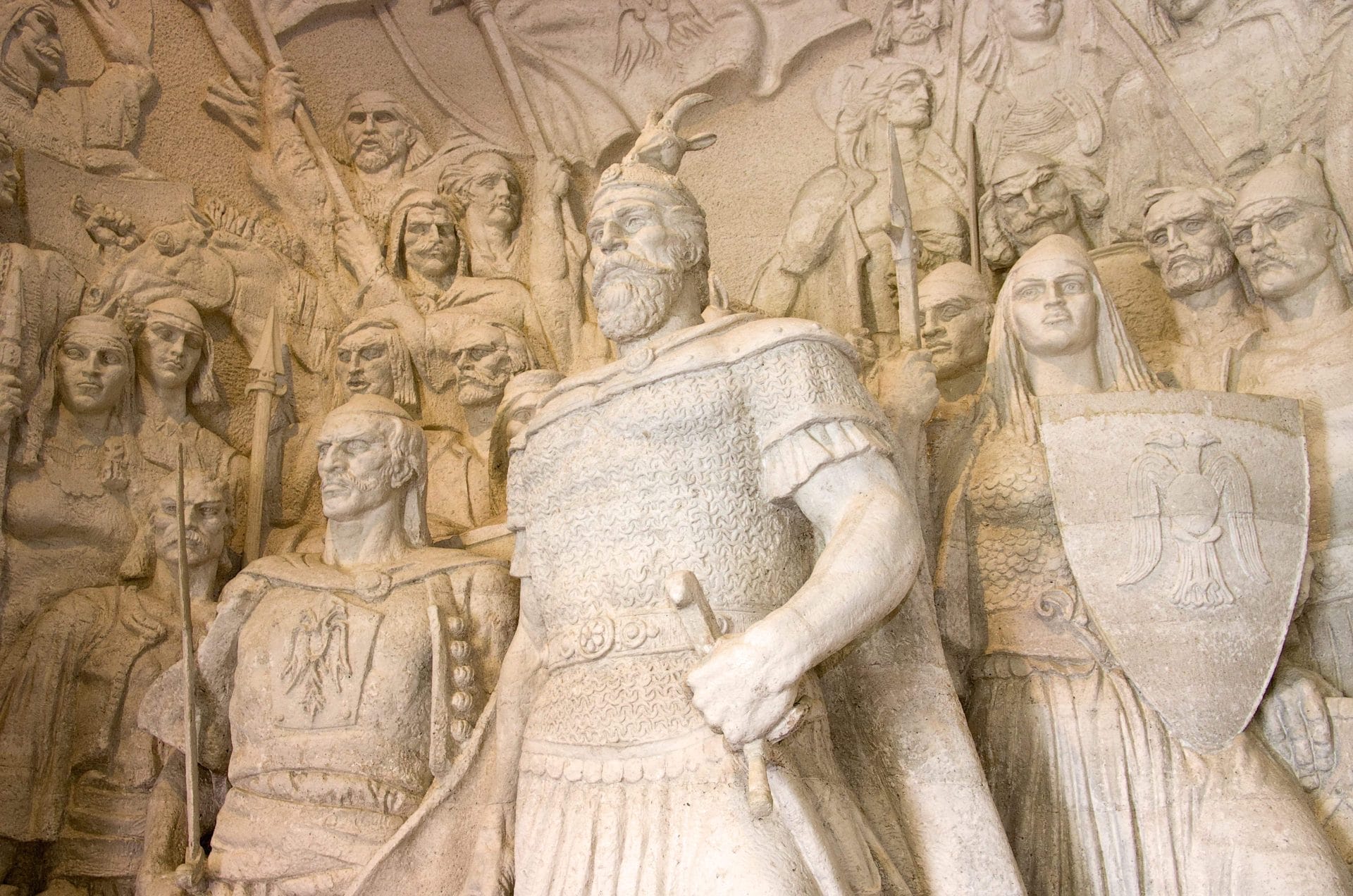
Key Takeaways
- The Gjergj Kastrioti National Museum is a central symbol of Albanian national identity and resilience.
- Skanderbeg’s legacy embodies resistance, unity, and the fight for independence, vividly showcased within the museum.
- The museum’s location within Krujë Castle offers a rich historical and architectural experience.
- Exhibits include artifacts like armor, documents, and multimedia displays that bring Skanderbeg’s story to life.
- The museum plays a vital role in preserving Albanian cultural heritage and inspiring future generations.
Table of contents
- Introduction to the Gjergj Kastrioti National Museum (Skanderbeg)
- Historical Background of Gjergj Kastrioti Skanderbeg
- Overview of the Gjergj Kastrioti National Museum (Skanderbeg)
- Collections and Exhibits at the Museum
- Cultural and Educational Importance
- Visiting Information
Nestled within the historic Krujë Castle, the Gjergj Kastrioti National Museum is more than just a repository of artifacts; it’s a living tribute to Albania’s national hero, Skanderbeg. This museum encapsulates the spirit of resistance and unity that defines Albanian identity.
Introduction to the Gjergj Kastrioti National Museum (Skanderbeg)
The Gjergj Kastrioti National Museum, often called the Skanderbeg Museum, stands as a monument of cultural pride and historical remembrance in Albania. Situated within the historic walls of Krujë Castle, this museum is a potent symbol of Albanian resistance and national identity.
This museum pays homage to Gjergj Kastrioti Skanderbeg, a legendary hero whose leadership against the Ottoman Empire has cemented his place in history. Visitors are transported into a past where bravery and resilience shaped the future of Albania, making it an essential destination for history enthusiasts and patriots alike.
Gjergj Kastrioti Skanderbeg: His Importance
Born in 1405, Skanderbeg is revered for his military genius, strategic leadership, and unifying vision. He brought together diverse Albanian tribes and principalities, creating a formidable resistance that kept the Ottoman forces at bay for over 25 years.
His victories weren’t just tactical; they fostered a sense of national pride and laid the groundwork for modern Albanian identity. Skanderbeg’s legacy as a diplomat, strategist, and symbol of resilience continues to inspire Albanians today, championing values of independence and unity.
Purpose of the Blog Post
This post aims to guide you through the rich history encapsulated within the Gjergj Kastrioti National Museum. By exploring Skanderbeg’s legacy, the collection of artifacts, and the significance of this cultural site, we hope to deepen your appreciation of Albanian heritage and help plan your visit to one of Albania’s most treasured landmarks.
Historical Background of Gjergj Kastrioti Skanderbeg
Skanderbeg’s Role in Albanian History
Skanderbeg’s leadership was pivotal in uniting Albanian territories against external threats. His vision was to forge a resilient, cohesive Albanian nation from fractured principalities—an effort that is vividly portrayed within the museum’s exhibits.
From executing strategic military campaigns against the Ottoman armies to establishing diplomatic alliances, Skanderbeg’s reign was marked by resilience and ingenuity. His victories defended Albanian lands and inspired cultural pride, ultimately shaping modern national consciousness.
Significance of the Museum Dedication
The museum’s dedication is a testament to the enduring legacy of Skanderbeg, serving as a vessel for collective memory and national pride. Artifacts, documents, and interactive displays all serve to honor his life and achievements.
It encapsulates Albania’s cultural identity rooted in resistance and resilience. Visiting the museum provides insight not only into Skanderbeg’s life but also into the broader struggles and triumphs of Albanian history.
Overview of the Gjergj Kastrioti National Museum
Location, Architectural Style, and Layout
The museum is strategically located within Krujë Castle, a symbol of Albanian resistance. The castle’s medieval architecture, with its imposing stone walls, towers, and battlements, creates an authentic ambiance that immerses visitors in history.
The design of the museum harmoniously blends medieval Balkan architecture with Ottoman influences, reflecting the layered history of the region. As you walk through its corridors, you traverse through time, experiencing a narrative of resilience and strategic innovation.
Key Features of the Museum Building
The museum occupies a prominent position within Krujë Castle’s courtyards. Its features include fortified walls, display halls housed in historic structures, and panoramic views of the surrounding landscape. Visitors can explore battlements, see restored medieval structures, and enjoy the castle’s commanding vistas.
The architecture preserves authenticity while providing modern exhibit spaces, offering a seamless connection between past and present. Climbing the castle’s towers or wandering through its courtyards allows for an immersive historical experience.
Collections and Exhibits at the Museum
Main Exhibits Related to Skanderbeg
The core exhibits showcase authentic artifacts: armor, weapons, banners, and personal items belonging to Skanderbeg. Each piece narrates the story of his military campaigns and leadership.
Documents such as treaties, correspondence, and historical maps provide context for his diplomatic efforts and battlefield strategies. Artistic representations—paintings, sculptures, and engravings—depict key moments in his life and battles.
Interactive or Multimedia Displays
The museum integrates modern technology with traditional exhibits, offering multimedia presentations, virtual reenactments of key battles, and touch screens sharing detailed historical information. These displays make the experience engaging and educational for visitors of all ages.
Insight into Albanian History and Skanderbeg’s Life
Beyond Skanderbeg himself, the museum contextualizes his story within the broader history of Albania and the Balkans. Exhibits discuss Ottoman rule, regional alliances, and the cultural evolution during his era.
This broader perspective helps visitors understand the importance of Skanderbeg’s resistance not only in military terms but also as a cultural and political movement shaping Albanian identity.
Cultural and Educational Importance
Role in Preserving Albanian Heritage
The museum is a vital custodian of Albanian history, protecting artifacts and documents vital to national heritage. Its efforts ensure that the legacy of Skanderbeg and the Albanian struggle for independence are preserved for future generations.
Educational Programs or Events
The museum hosts guided tours, workshops, reenactments, and cultural festivals that make history accessible and engaging. These programs promote learning and foster pride among local communities and visitors alike.
Significance for Locals and Tourists
For locals, the museum reinforces national identity and pride. For tourists, it provides an immersive journey into Albanian history, with a focus on Skanderbeg’s heroism and the cultural legacy woven into Krujë’s landscape.


0 Comment